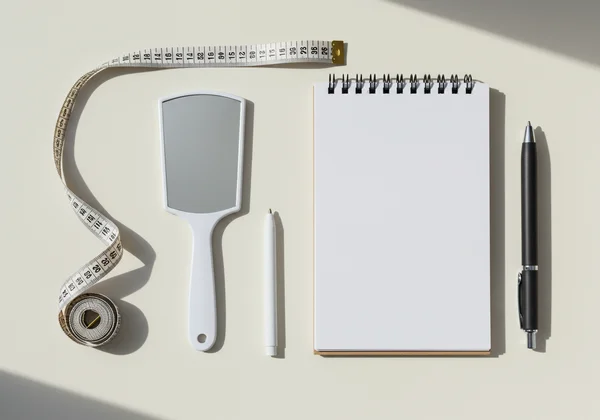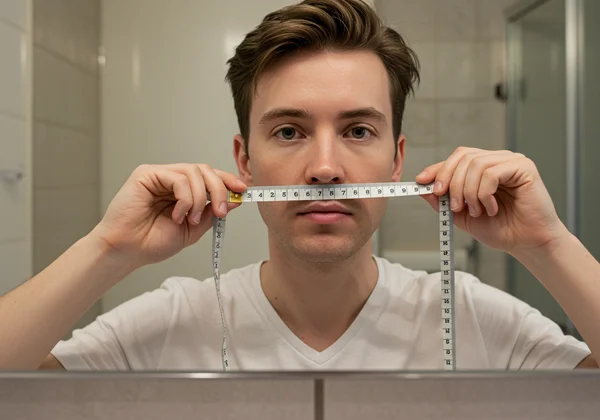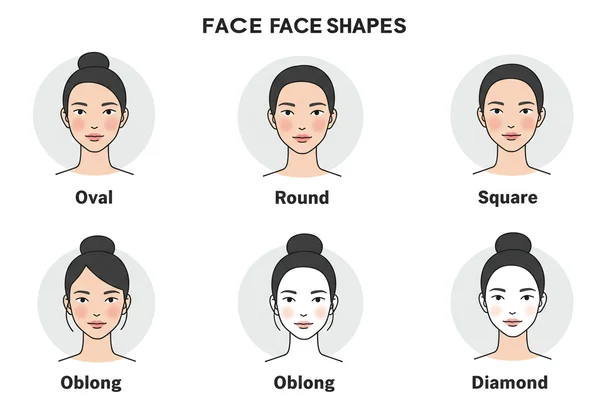How to Determine Your Face Shapes at Home: A Comprehensive Guide
Have you ever followed a celebrity hairstyle tutorial, only to find it doesn't look quite right on you? Or perhaps you've spent hours trying on glasses, feeling completely lost in a sea of frames. The secret to unlocking your best look often starts with one simple piece of information: your face shape. Knowing this empowers you to choose styles that naturally flatter your unique features. If you've been wondering what is my face shape?, this guide is your first step toward clarity.
This article will walk you through how to measure your face shape using a simple, at-home method. We'll cover the tools you need, the steps to take, and how to interpret your results. And for those seeking a truly precise and effortless answer, we'll reveal a powerful AI-driven alternative that takes the guesswork out of the equation. Are you ready to find your face shape and transform your style choices?
Understanding Your Facial Dimensions & What You'll Need
Before you can determine your face shape, you need to understand the basic proportions that define it. It’s not about judging your features, but about gathering objective data—your facial measurements. This data-driven approach takes the guesswork out, giving you a clear blueprint to work with. Fortunately, you don’t need a fancy lab; a few household items will do the trick.
Key Measurements for Face Shape Identification
To perform an accurate face shape analysis, we need to capture four critical measurements. Each one tells a part of the story about your facial structure. These measurements are:
- Forehead Width: The measurement across the widest part of your forehead, typically halfway between your eyebrows and your hairline.
- Cheekbone Width: The distance from the peak of one cheekbone to the other. This is often the widest part of your face.
- Jawline Measurement: The length from the tip of your chin to the point below your ear where your jaw angles upward. You will then multiply this number by two.
- Face Length: The distance from the center of your hairline straight down to the tip of your chin.
Essential Tools for Accurate Home Measurement
Gathering these data points is easy. All you need are a few simple items you likely already have.
-
A Flexible Measuring Tape: The kind used for sewing is perfect. If you don't have one, a piece of string or even a phone charging cable and a ruler will work.
-
A Mirror: A well-lit bathroom or vanity mirror is ideal.
-
A Pen and Paper (or a notes app): To jot down your measurements as you go.
-
A Hair Tie or Headband: To pull your hair completely away from your face for a clear view.

Step-by-Step Guide: How to Measure Your Face Shape at Home
With your tools ready and your hair pulled back, it’s time to start measuring. Stand directly in front of the mirror, look straight ahead, and keep a relaxed facial expression. For the most accurate results, ensure you are measuring the bone structure, not just the surface skin.
Measuring Your Forehead Width
Position the end of your measuring tape at the peak of the arch of one eyebrow. Extend it across your forehead to the same point on the opposite side. The widest point is usually about midway between your eyebrows and your upper hairline. Record this number as your forehead width.
Finding Your Cheekbone Width
Now, let’s find the cheekbone width. Using your fingertips, feel for the most prominent part of your cheekbones, usually just below the outer corners of your eyes. Measure the distance from the peak of your left cheekbone to the peak of your right cheekbone. This measurement is crucial for identifying shapes like round and diamond.
Determining Your Jawline Measurement
This one can be a little tricky but is vital for understanding your jawline shape. Place the end of the measuring tape at the tip of your chin. Follow the line of your jaw up to the point directly below your ear where your jawbone begins to angle upwards. Record that number, then multiply it by two to get your full jawline length.
Calculating Your Face Length
Finally, let’s measure your face length. Place the measuring tape at the center of your hairline and run it straight down over your nose to the very tip of your chin. If you have a receding hairline or are bald, estimate where your hairline would naturally begin. This final number completes your set of facial proportions.

Decoding Your Results: What Face Shape Do You Have?
Now that you have your four measurements, you can act as a detective and piece together the clues to find your face shape. Compare your numbers to the characteristics below to see which profile you match most closely.
Common Face Shape Characteristics Based on Measurements
-
Oval Face Shape: Face length is greater than the width of the cheekbones, and the forehead is wider than the jawline. The angle of the jaw is rounded.
-
Round Face Shape: Cheekbone width and face length are very similar. The forehead and jawline are also similar in width and are narrower than the cheekbones. The jaw angle is soft and less defined.
-
Square Face Shape: All measurements are fairly similar. The width of the forehead, cheekbones, and jawline are very close, and the jaw angle is sharp and defined.
-
Oblong Face Shape: Face length is the largest measurement. The forehead, cheekbones, and jawline are similar in width.
-
Heart Face Shape: The forehead is the widest measurement, followed by the cheekbones, while the chin is narrow and pointed. Think of an inverted triangle.
-
Diamond Face Shape: The cheekbones are the widest part of the face. The forehead and jawline are narrower and have a similar width.

The Limits of Manual Measurement & The AI Advantage
Did your numbers point to a clear shape, or do you feel like you're a mix of two or three? This is a common frustration with manual measurement. A slight shift of the tape or a subjective judgment can change the outcome. It’s a great starting point, but it's not always precise.
This is where technology provides a superior solution. An AI face shape detector eliminates human error and subjective guessing. By analyzing dozens of key facial landmarks in seconds, an AI tool provides an objective, data-driven result. If you want to skip the tape measure and get an instant, accurate answer, you can get precise results with our advanced technology. Our tool respects your privacy, never storing your photo.

Your Journey to Face Shape Clarity Starts Here
Understanding your face shape is more than just a fun fact; it's a practical tool for self-expression. It provides the foundation you need to choose the most flattering hairstyles, glasses, makeup techniques, and accessories with confidence. While measuring at home is a fantastic first step, achieving true clarity and precision is now easier than ever.
Don’t let uncertainty hold you back from your best look. Embrace the power of technology to make exploration easier and life richer. Ready to know for sure? Try our free tool today and discover your unique face shape in seconds.
Frequently Asked Questions About Determining Face Shapes
How accurate is measuring my face shape at home?
Measuring your face at home can give you a good estimate and often points you in the right direction. However, its accuracy depends on how precisely you measure. It's easy to be off by a fraction of an inch, which can blur the lines between shapes like round and square, or oval and oblong. It’s best used as a general guide.
What is the easiest and most precise way to find my face shape?
Without a doubt, the easiest and most precise method is using a dedicated face shape app or online tool. The AI Face Shapes Detector online tool uses sophisticated algorithms to analyze your facial structure from a single photo. It’s instant, free, and removes the potential for human error, giving you a definitive answer you can trust.
Can my face shape change over time?
Yes, your face shape can change subtly over time due to factors like weight fluctuations, aging, or dental changes. However, your underlying bone structure—the primary determinant of your face shape—remains constant throughout your adult life. You won't change from a square to a round face shape, but the definition might soften.
What if my measurements don't perfectly match a single face shape?
This is very common and a key limitation of the manual method. Many people have combination face shapes. If you find yourself in this situation, it highlights the benefit of a more advanced analysis. An AI tool can identify the dominant shape, giving you a clear starting point for your style choices.